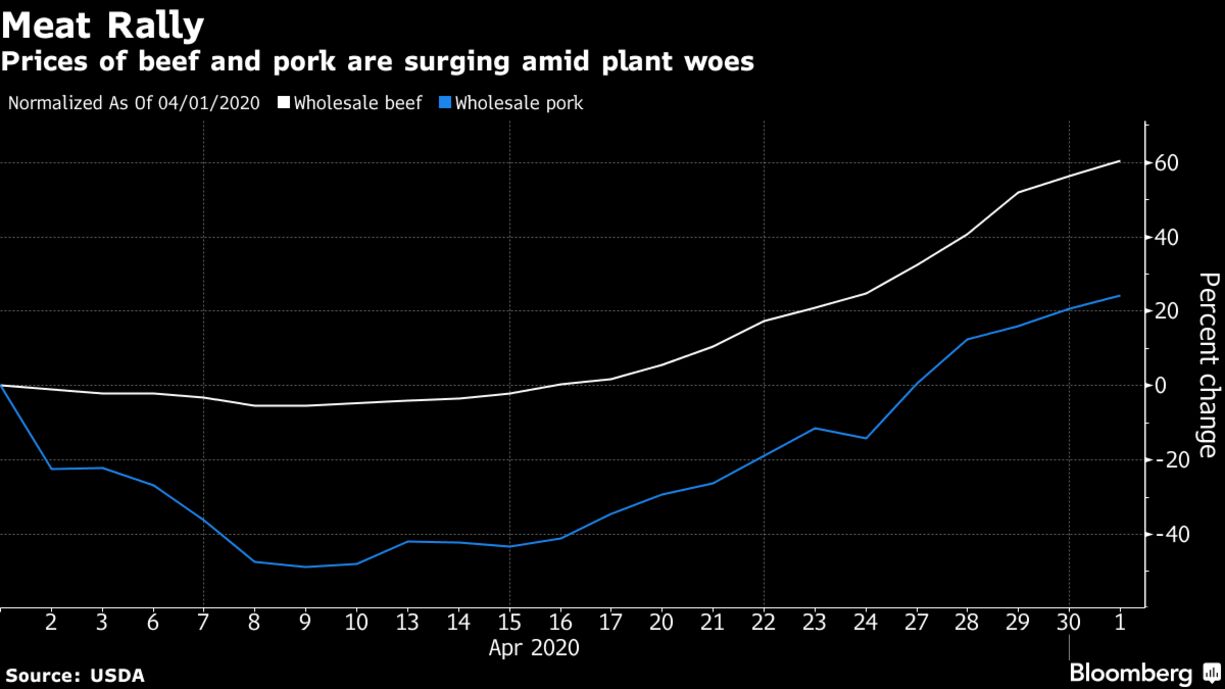American beef output is down a lot more than plant closures would have you believe — a sign that slowdowns at facilities will continue to keep meat supplies tight even when some production lines reopen. Cattle slaughter dropped 37% this week from a year ago, U.S. Department of Agriculture data show. That far outstrips the 10% to 15% in capacity that’s been halted with meat plants closed after coronavirus outbreaks among employees. Hog slaughter was down 35%, also topping the shutdown figure of 25% to 30%.
While many plants have stayed open, they’ve still been forced to slow output as producers combat a loss of labor. Social-distancing measures will also likely keep output trailing normal levels even as facilities reopen under President Donald Trump’s executive order.
Already, some grocers are beginning to ration supplies as the virus forces unprecedented disruptions in meat processing. Kroger Co., the nation’s biggest traditional supermarket chain, on Friday said it was limiting purchases of ground beef and fresh pork “at select stores.” Wholesale prices for both the meats have surged, and it’s starting to translate into higher bills at the retail level.

This week, 425,000 cattle were slaughtered, down 8.6% from last week, according to USDA estimates. For hogs, 1.545 million were slaughtered, down 22% from a week earlier. There are signs slaughter rates will continue to stay low.
Top pork producer Smithfield Foods Inc. is reopening a hog-processing plant in South Dakota on Monday that had been closed since April 12, according to Kooper Caraway, president of Sioux Falls AFL-CIO, which represents workers at the facility.
